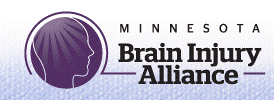Minnesota Brain Injury Alliance
The Minnesota Brain Injury Alliance has partnered with the Minnesota Department of Health to provide free support to people who have had a brain injury and their families.
The Minnesota Brain Injury Alliance helps by providing a program called Resource Facilitation. Participants in this program will receive scheduled calls over a two-year period to help problem solve issues together and find resources to help them transition back into family life, work, school, and community, while supporting their independence.
Examples of Resource Facilitation the Minnesota Brain Injury Alliance provides:
- Emotional support in coping with a new normal
- Finding a support group
- Finding where and how to get a brain injury assessed
- Supporting caregivers by connecting to resources
- Education about diagnosis and symptoms
- Helping caregivers and family understand new symptoms and invisible symptoms.
- Help in figuring out the logistics of returning to work, school, and understanding disability rights.
- Coaching on navigating federal, state, and county health and disability services systems.
- Connecting with additional support services.
The Minnesota Brain Injury Alliance may also help with case management, education and outreach.
